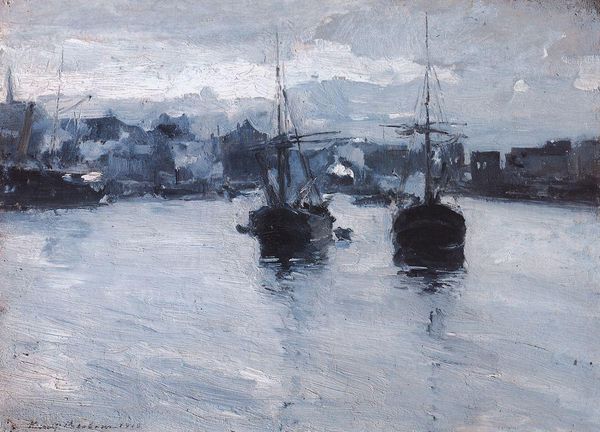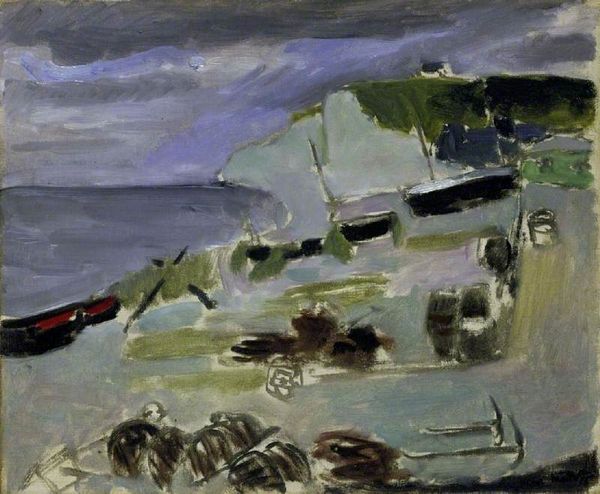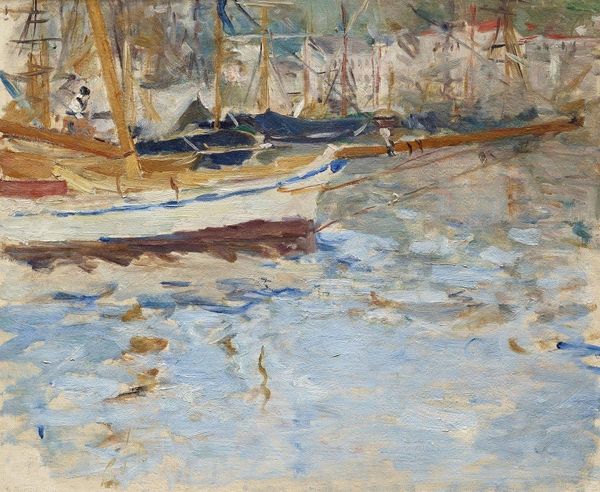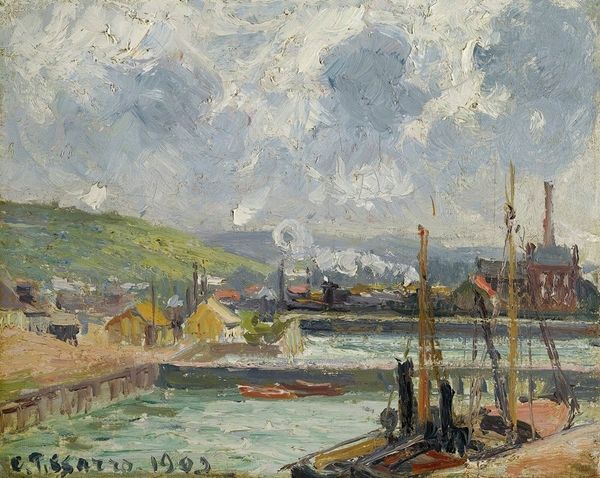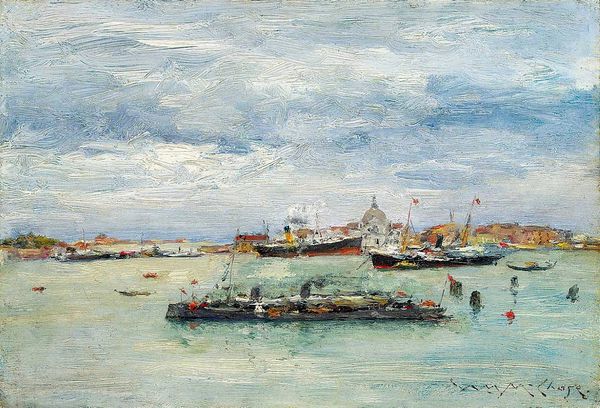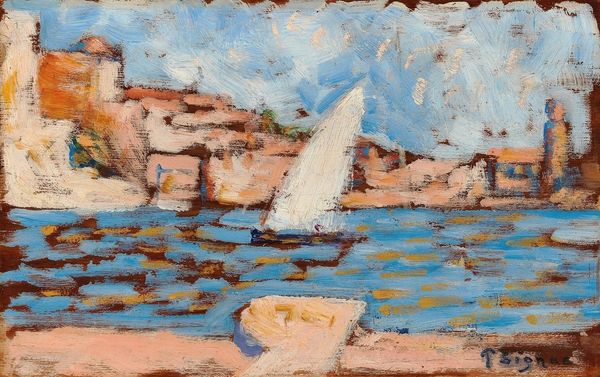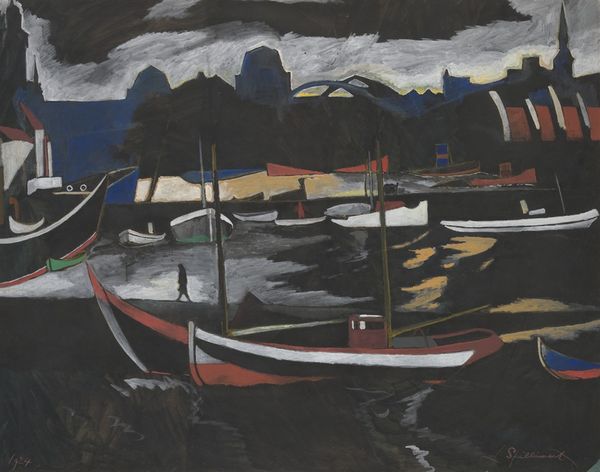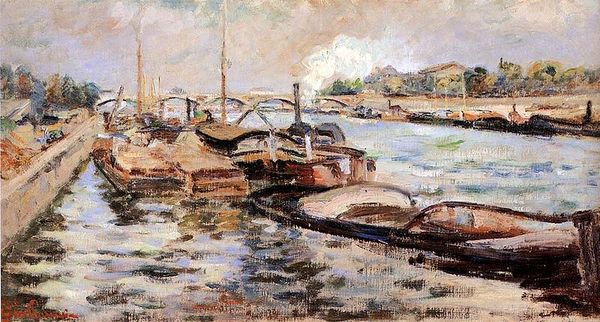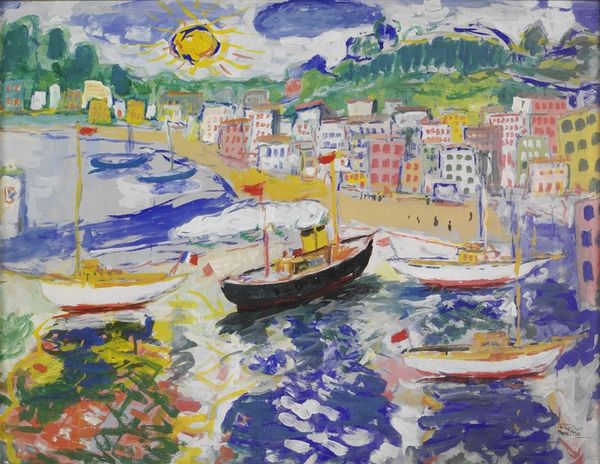
Copyright: Public Domain: Artvee
Curator: Ah, here we have Lovis Corinth's "Luzerner See am Vormittag," painted in 1924. The artist is rendering Lake Lucerne in Switzerland, using oil paints in the Plein-air style. Editor: My first impression? Turbulent. There's a certain heaviness in the sky that presses down, almost mirroring in the choppy water. The palette is fairly muted, which makes those pops of red on the buildings and boats so vital. Curator: It is heavy, isn’t it? The strokes themselves are quite visible, layered thickly—impasto, one might say—which contributes to this sense of unsettled energy, a surface teeming with movement. You sense Corinth isn't just showing us the lake, but a feeling *of* the lake. I always found this one strangely moody, as if all the gray tones hint at impending weather. Editor: That mood resonates, certainly. Considering the time—1924—this artwork pulses with anxieties and reflects Germany's tumultuous post-war era; perhaps that underlying disquiet you observe is exactly that – an uncertain future looming over an idyllic scene. And notice how the town nestled into the landscape becomes an encroachment, suggesting a shift in natural environments as humanity exerts more influence. Curator: That’s an astute observation! I’m inclined to view the “cityscape” reading from another direction—Corinth lived a large portion of his mature years within major cities. The ‘natural’ landscape, then, may be understood as more or less mediated through an urban existence? But, regardless, it does point to a sort of vulnerability. The high horizon line also tilts everything into our space, closing that distance. Editor: Yes, there’s something very direct in its presentation, almost confrontational! But thinking about accessibility in relation to that… How do we make sure this artwork doesn’t unintentionally reproduce inaccessibility for visually impaired viewers? The thick impasto that grants such striking texture also creates very detailed impressions. How do we best communicate that tactile and complex quality in audio descriptions? Curator: That is something worth thinking about. To come full circle: Despite—or perhaps *because* of—this tension and all of the greys, there’s also a surprising serenity. It captures something fundamental, you know? The ephemeral beauty in an ever-shifting world. Editor: Ultimately, it speaks of resilience and an engagement with transience in an era marked by incredible upheavals, and the power of art to mirror and challenge perspectives.
Comments
No comments
Be the first to comment and join the conversation on the ultimate creative platform.

